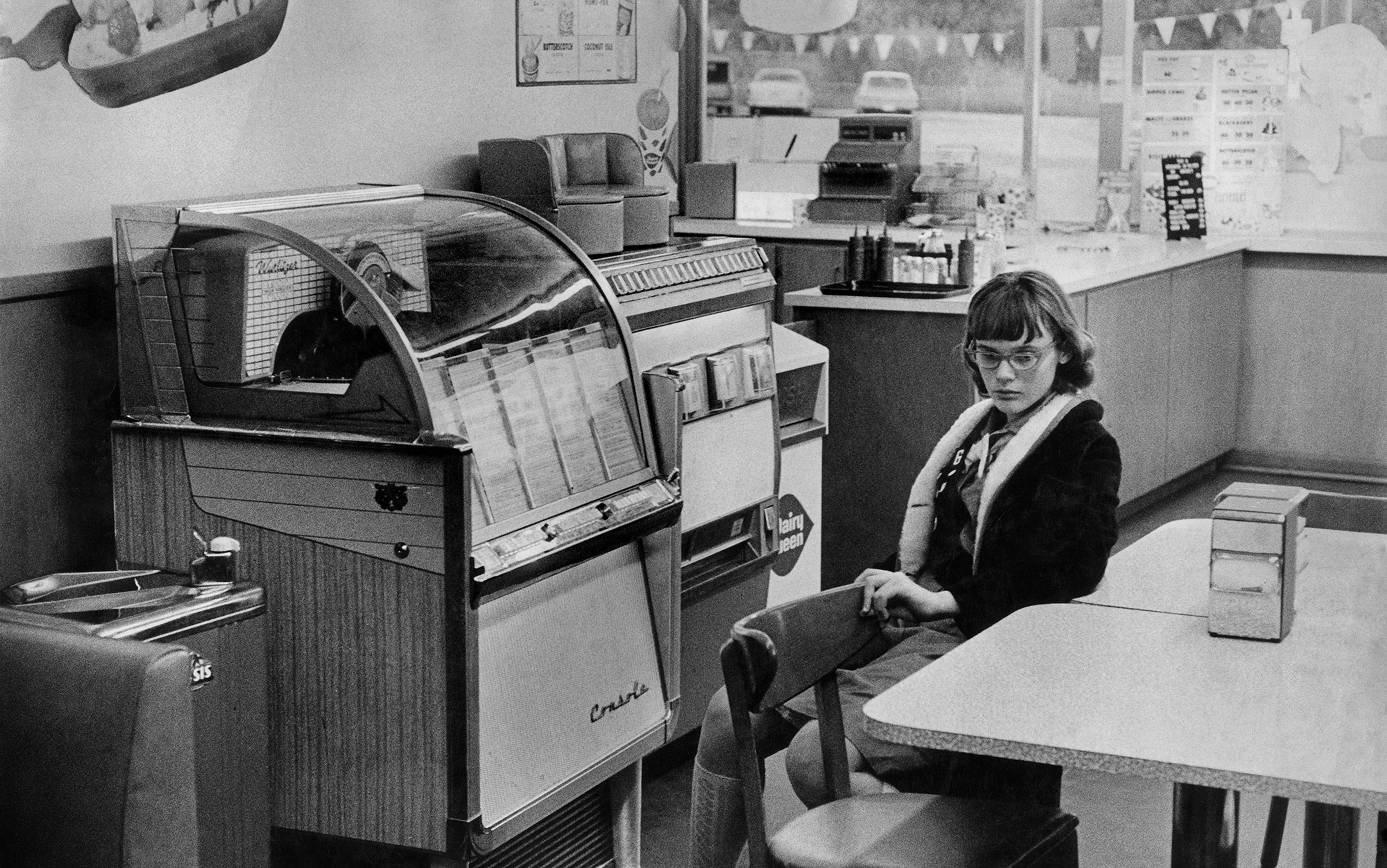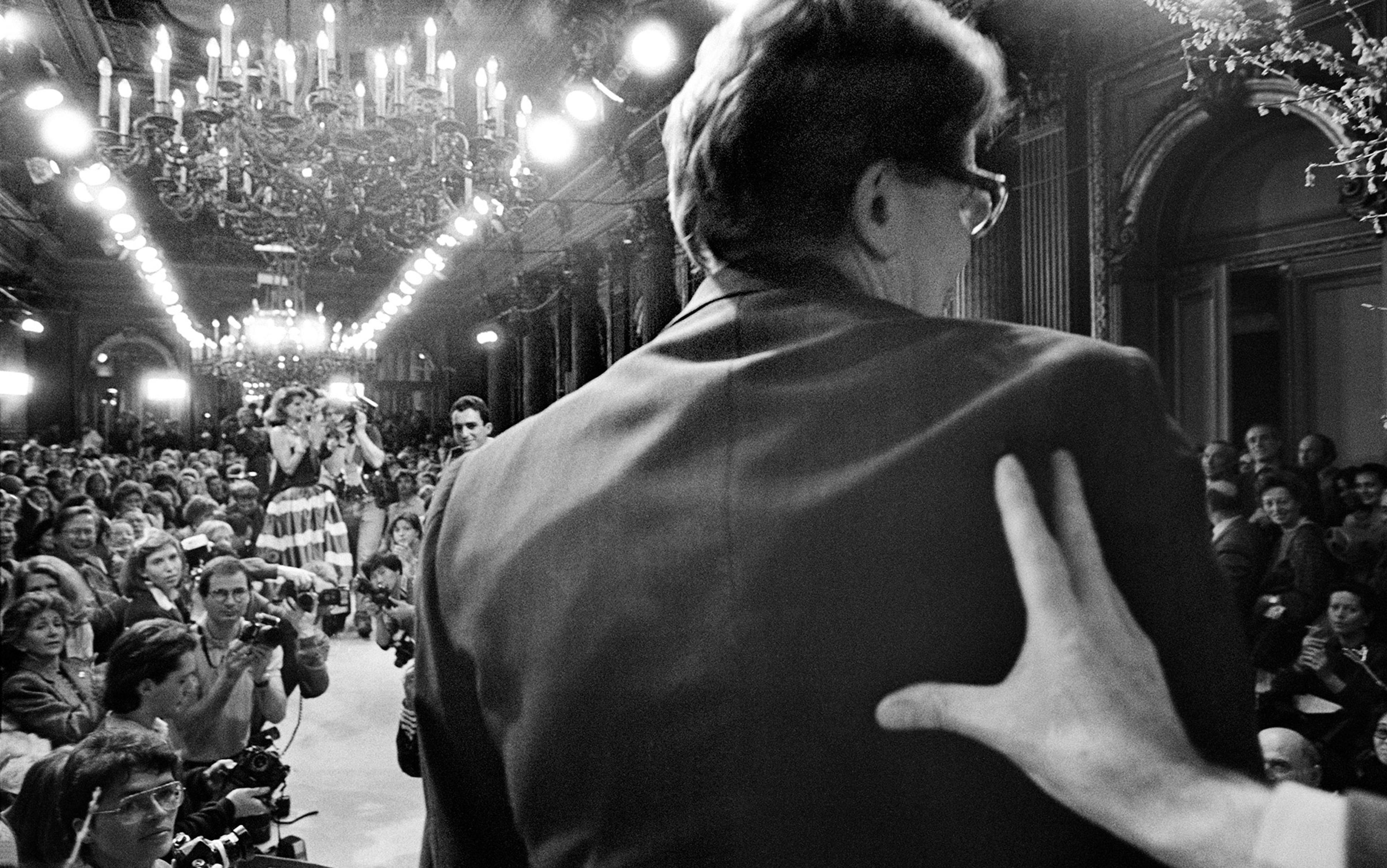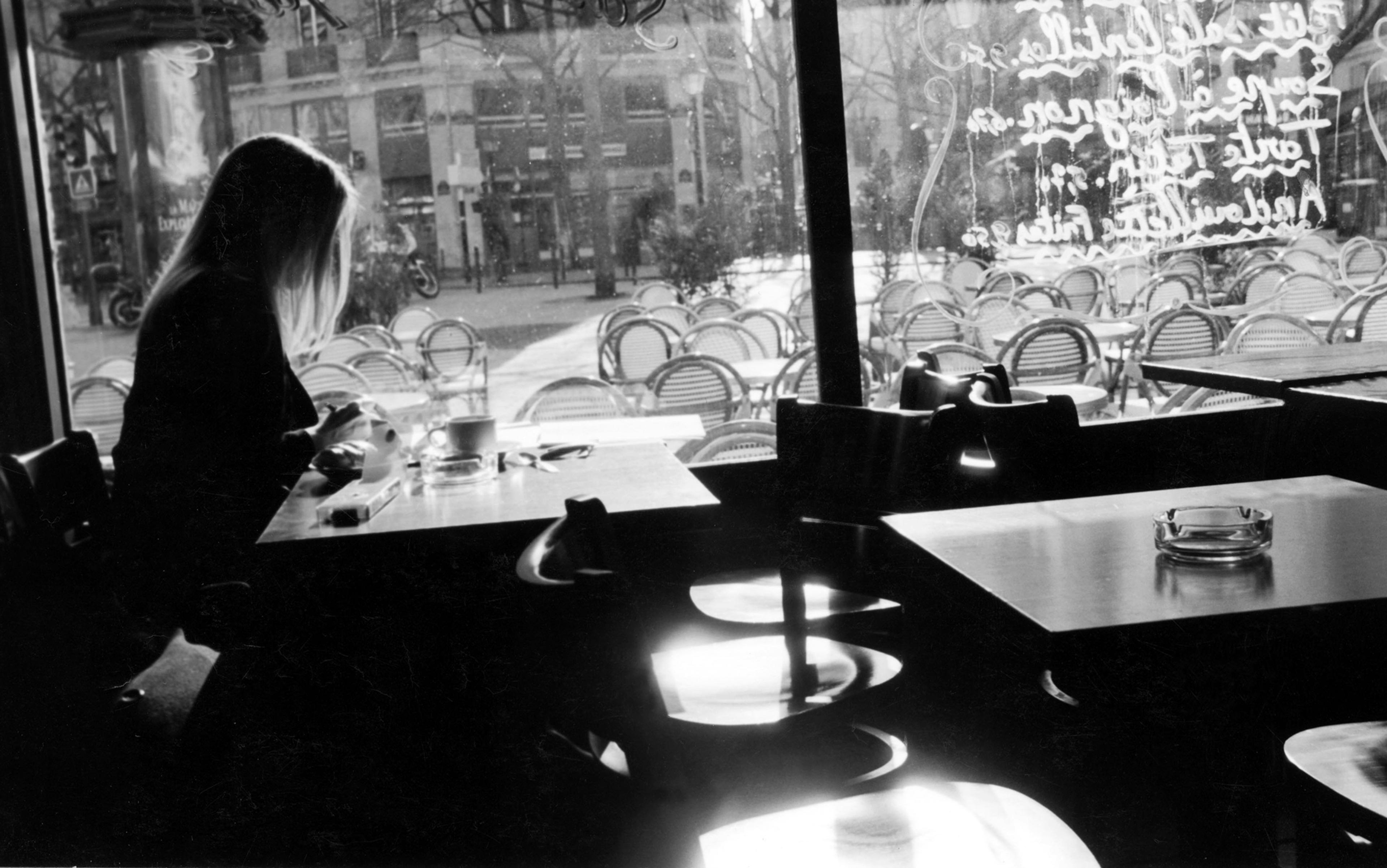The psychologist Naomi Eisenberger describes herself as a mutt of a scientist. Never quite fitting the mould of the fields she studied – psychobiology, health psychology, neuroscience – she took an unusual early interest in what you might call the emotional life of the brain. As a doctoral student at the University of California, Los Angeles (UCLA), Eisenberger found it curious that we often describe being rejected in terms of physical pain: ‘My heart was broken’, ‘I felt crushed’, ‘He hurt my feelings’, ‘It was like a slap in the face’. More than metaphors, these expressions seem to capture something essential about how we feel in a way that we can’t convey directly. And you’ll find similar ones not just in English but in languages all over the world. Eisenberger wondered why. Could there be a deeper connection between physical and emotional pain?
In a landmark experiment in 2003, Eisenberger and her colleagues had test subjects strapped with virtual-reality headsets. Peering through goggles, the participants could see their own hand and a ball, plus two cartoon characters – the avatars of fellow participants in another room. With the press of a button, each player could toss the ball to another player while the researchers measured their brain activity through fMRI scans. In the first round of CyberBall – as the game became known – the ball flew back and forth just as you’d expect, but pretty soon the players in the second room started making passes only to each other, completely ignoring the player in the first room. In reality, there were no other players: just a computer programmed to ‘reject’ each participant so that the scientists could see how exclusion – what they called ‘social pain’ – affects the brain.
Physical pain involves several brain regions, some of which detect its location, while others, such as the anterior insula (AI) and the dorsal anterior cingulate cortex (dACC), process the subjective experience, the unpleasantness, of pain. In fMRI scans of people playing CyberBall, Eisenberger’s team saw both the AI and the dACC light up in participants excluded from the game. Moreover, those who felt the most emotional distress also showed the most pain-related brain activity. In other words, being socially rejected triggered the same neural circuits that process physical injury, and translate it into the experience we call pain.
At the time, this was a radical idea – and it still is. It essentially suggests that the brain makes no distinction between a broken bone and an aching heart. Rejection, it tells us, actually hurts. For Eisenberger, this overlap between physical and social pain transcends scientific interest. ‘It reveals something to people that they probably already knew but maybe were afraid to believe,’ she told Edge magazine in 2014. ‘It’s not just in our head. It is in our head because it’s in our brain.’
Since the original CyberBall experiment, a number of studies have replicated and extended its results. Researchers have found, for example, that social rejection doesn’t have to be explicit to trigger the brain’s pain mechanism: just seeing a picture of your ex-partner or even a video of disapproving faces activates the same neural pathways as physical pain does. At one point, Eisenberger and her team posed a seemingly daft question: if physical and emotional pain are related, could a painkiller relieve heartache? In the study that followed, some participants took two daily doses of Tylenol (a common painkiller) for three weeks while others took a placebo, and each group recorded their day-to-day emotions in a diary. By the end of the experiment, the Tylenol group reported less distress and showed less brain activity in the pain regions after being rejected than the placebo group.
That’s not the end of emotional pain, of course, and you can surely do better than pop a pill each time the world snubs you. Still, the Tylenol study reveals something remarkable about rejection: that it can spill beyond our emotional lives and into our physical selves. In fact, in recent years social rejection has emerged as key to a number of discoveries across psychology, neuroscience, economics, evolutionary biology, epidemiology and genetics, forcing scientists to rethink what makes us sick or healthy, why some people live long while others die early, and how social inequalities affect our brains and bodies.
According to Eisenberger, the significance of social pain goes back to evolution. Throughout history, we depended on other people for survival: they nurtured us, helped to gather food and provide protection against predators and enemy tribes. Social relationships literally kept us alive. Perhaps, then, just like physical pain, the pain of rejection evolved as a signal of threat to our lives. And perhaps nature, taking a clever shortcut, simply ‘borrowed’ the existing mechanism for physical pain instead of creating a new one from scratch, which is how broken bones and broken hearts ended up so intimately interconnected in our brains.
What’s remarkable about this connection is how even trivial slights can ‘get under the skin’, as researchers put it. During CyberBall, being ignored by people you didn’t know and couldn’t even see was enough to trigger an ancient pain response designed to keep you alive. And simply watching videos of disapproving faces produced the same effect. But what about major blows to our need to belong? Intuitively, you’d expect that, the more significant the rejection, the stronger the ensuing pain – but this is not what researchers find. It turns out that something else happens too, when we get rejected – by spouses, bosses, peers, at work, at school, at home – and it can help us understand not only our struggle for acceptance but the often longing desperation that comes with it.
Roy Baumeister is a social scientist who has spent 30 years studying self-esteem, decision making, sexuality, free will and belonging. In a series of experiments conducted with colleagues since the late 1990s, Baumeister found that following social rejection people become significantly more aggressive, prone to cheating and risk-taking, and unwilling to help others. But despite their swift change in behaviour, the socially rejected subjects showed no evidence of actually feeling hurt. This puzzled the researchers: it went against their predictions that rejection would trigger negative emotions, which, in turn, would trigger aberrant behaviour. In this case, Baumeister says, ‘the emotion never showed up’.
In one study, he and his team divided undergraduates into groups of four to six, gave them some time to mingle, then separated them and asked each one to pick two other students as partners on the next task. Some participants were told that everyone had picked them, while others were told that no one had. In the end, when all the students rated their feelings, the rejected group showed no change in emotions: instead of feeling upset, they seemed to have become emotionally numb.
The same thing happened over and over, no matter how the researchers simulated rejection or measured emotion. They thought that perhaps the hurt feelings were there but the students felt too embarrassed to admit them. So in another experiment the participants had to rate how they felt about a fellow student who was in significant pain after a leg injury or a romantic breakup. The researchers reasoned that, even if the students couldn’t face their own emotions, they should still be able to feel for someone else. Once again, though, the socially rejected showed much less empathy, which led to the conclusion that their emotions had indeed shut down.
Baumeister calls this phenomenon ego-shock – an allusion to the physical numbness that can follow injury. Cutting yourself on a tin of tuna, for example, you might feel nothing at first; it’s as if for a brief moment your body shuts down to shield you against the pain. When you get rejected, Baumeister says, your psyche might similarly freeze up to protect you against the onslaught of emotional pain. Rejection, it seems, doesn’t always hurt; sometimes it goes beyond hurt, leaving us unable to feel anything at all.
What is identity but the slow, lifelong accretion of gazes: us looking at ourselves being looked at by others?
In one study, Baumeister asked participants to write about a major blow to their self-worth and describe their immediate reaction. Peer rejection was, by far, most frequently recounted, followed by academic and romantic rejection. Moreover, compared with minor incidents, the aftermath of major threats provoked significantly different responses in the subjects. They were more likely to become disoriented and paralysed, as well as lose their ability to think straight and make decisions. They felt removed from their bodies, as if looking at things from a distance. The world appeared to them unfamiliar and strange. This limbo state doesn’t normally last beyond a few minutes. Eventually, people collect themselves, and remember who and where they are.
However fleeting, such moments of shock, of utter unguardedness, reveal something about rejection and belonging that normally remains hidden. We are more than social animals. We don’t just live with others but also through them and in them. They place us and ground us into the world. When they see us, they identify us. After all, what is identity but the slow, lifelong accretion of gazes: us looking at ourselves being looked at by others? What we see is, largely, what they see, or what we think they see. And when they turn away, when we become unseen, in a way we cease to be.
Rejection doesn’t have to come from family, or even people you know, to do harm. Nor does it have to be particularly overt. In insidious forms, it lurks woven into the very fabric of society. In an interview for Radio Boston in 2012, Jerome Kagan, a psychologist at Harvard University, and a pioneer in child development and personality studies, said: ‘The best predictor today in Europe or North America of who will be depressed is not a gene and it’s not a measure of your brain; it’s whether you’re poor.’ Kagan’s statement echoes something researchers have long known: that poor people have poorer health. It’s an argument that makes intuitive sense. Poverty, after all, entails a host of risk factors – child maltreatment, drug abuse, crime, unemployment, bad nutrition, inadequate health care – that have been linked to various physical and mental illnesses.
But debilitating as it is, poverty doesn’t tell the whole story. In developed countries in particular, as average incomes and living standards have steadily improved, health problems have continued to beset enormous numbers of people – and not just the poor. Consider the Whitehall studies: between 1967 and 1970, the epidemiologist Michael Marmot at University College London Medical School and his team collected data on 18,000 men from the British civil service (based at Whitehall, London). After following them for 10 years, they found that unskilled workers at the bottom of the hierarchy died at about three times the rate of senior administrative staff at the top. Access to healthcare – free then as it is now – could not explain the dramatic difference in mortality between the employment ranks. What’s more, a similar pattern emerged not just at the extremes but at all levels of the pecking order: the lower your status at work, the shorter your life.
Mounting evidence over the past two decades has established low socioeconomic status as a key predictor of early mortality and poor health, including cardiovascular disease, arthritis, diabetes, respiratory illnesses, cervical cancer, schizophrenia, substance abuse and anxiety. And as with the Whitehall studies, the negative health effects extend beyond the poor to everybody on the social ladder. The link between health and social status – whether you measure it by income, education or occupation, or even by where people think they stand in relation to others – has appeared with remarkable consistency in studies of thousands of US adolescents, South Koreans, African Americans, and older adults in the UK. According to Marmot’s data, ‘if everyone in England had the same death rates as the most advantaged, a total of between 1.3 and 2.5 million extra life years would be enjoyed by those dying prematurely each year.’
Not all researchers share Marmot’s view, or his urgency. Some claim that socioeconomic status doesn’t cause ill health, but that ill people, having a harder time in school or at work, simply tend to ‘drift’ to the bottom of the social ladder. The inequality researchers Richard Wilkinson and Kate Pickett in the UK disagree. In their book The Spirit Level (2009), they argue that drift cannot explain the well-documented pattern observed between countries: namely, that more unequal societies, with presumably steeper social hierarchies and bigger status differences, exhibit worse health outcomes. There seems to be something about our social position, they say, that gets under our skin.
But what? How could your social status make you sick? Access to resources – a natural suspect – doesn’t explain the ubiquity of status effects on health. While those at the very bottom might suffer from inadequate hygiene, nutrition and health care, these factors can’t account for the health gaps found across the social ladder. The privileged might seem like a different species at times but neither their doctors nor their food and certainly not their toiletries come infused with magical properties inaccessible to most in the middle. And yet the middle suffers more depression, diabetes and early death than those in the upper echelons of society.
One possible reason, according to Wilkinson and Pickett, is ‘status anxiety’. The core insight here is that social status carries an implicit judgment of one’s value to society. The higher up the ladder you are, the more respect and admiration you command from those around you. By contrast, being lower down the hierarchy implies a failure to live up to society’s standards of success. It is to be judged as lacking and seen as inferior; in other words: to be rejected. The rejection might be implicit but, if anything, that makes it even more pernicious because it goes unquestioned: we often accept social inequality the way we inhale polluted air, or we justify it as a matter of merit. So if you find yourself near the bottom, you can feel worthless, hopeless and helpless.
The harm goes beyond emotions. A growing number of researchers now recognise that threats to our social identity, such as being negatively evaluated by others, can tamper with crucial neurobiological systems. Studies of animals in subordinate rank and people exposed to negative evaluation (for example, after giving a speech to an audience) suggest that social rejection triggers inflammation – the body’s innate response to injury. Just as with physical threats, social ones can signal mortal danger, setting off a defensive immune attack against microbial intruders. While the process helps to fight infection, according to George Slavich, director of the UCLA Laboratory for Stress Assessment and Research, in cases of social rejection the effect can get out of hand, spiking inflammation to dangerous levels. Chronic inflammation, in turn, has been linked to diabetes, cardiovascular disease, some cancers, Alzheimer’s, arthritis, depression and others. Fuelled by the social rejection that pervades low status, it can also help to explain that elusive link between poor health and social inequalities.
The unsettling thing about social status is that it’s always relative. Where you stand on the social ladder has less to do with your actual circumstances than your comparative position in relation to everyone else on the ladder. Inevitably, this ranking produces more losers than winners, not unlike in sports, where second best is never good enough: there’s only one gold medal in an Olympics game, and everything else feels like a consolation. Here’s how Wilkinson and Pickett put it: ‘Whether people live in a shack with an earth floor and no sanitation or in a three-bedroom house with fridge, washing machine and television, low social status is experienced as overwhelmingly degrading.’
The most unequal countries had twice the levels of mental illness and obesity as the most equal ones
Climbing the ladder doesn’t necessarily solve the problem; it might just raise the bar. Say you jump a few rungs, landing at the top of your peer group. You gaze down from this new perch and think how far you’ve made it. But then you realise that your reference point has now shifted: you’ve moved up to a new social group and the top has been pushed higher. A successful venture capitalist once told me that, despite its outward glamour, Silicon Valley hides a lot of misery. His explanation: no matter how much you achieve, someone is always above you. Status, it seems, is a game you can never win because the target keeps moving, a game in which every success can also be a failure, and every winner – a loser.
Does all this mean we are doomed, bar the lucky few at the top? After all, dominance systems are how we organise social experience, whether we’re talking about bees, chimpanzees or humans. But if we can’t abolish hierarchies, perhaps we can flatten them? Wilkinson and Pickett argue that, apart from lifting the bottom, greater equality will spark a chain of positive changes across society. In one study, the two researchers measured the average income per person in 21 rich nations against an index of each country’s health and social problems, and found no connection between the two. But when they ranked the countries from the most equal (eg, Japan and the Scandinavian nations) to the least (eg, the UK, Portugal and the US), a clear pattern emerged that could not be chalked up to chance: the most unequal countries had twice the levels of mental illness and obesity as the most equal ones; three to five years lower life expectancy; six to 10 times higher teenage birthrates; up to 12 times increased incidence of homicide, and markedly lower literacy.
One way to account for the benefits of greater equality might be that it dissolves the boundaries between groups, promoting social mixing and integration. For a long time, researchers have known that socially integrated people enjoy better health and longevity than socially isolated ones, but until recently it wasn’t clear why. Was it that social relationships improved people’s health or that healthy people simply had better social lives? The data was too limited to tell until the mid-1980s, when well-designed longitudinal studies enabled scholars to track thousands of people over several decades. These rich datasets, combined with stronger theoretical frameworks, provide plenty of evidence for the damaging effects of social isolation.
In 2015, the psychologists Julianne Holt-Lunstad and Timothy Smith of Brigham Young University in Utah looked at 70 studies that collectively followed more than 3 million older adults for an average of seven years. The researchers found that social isolation increased a subject’s likelihood of being dead at the end of the study by 29 per cent. This result held true even when the researchers controlled for the participants’ initial health status. Other studies have linked social isolation to coronary heart disease, stroke, dementia and Alzheimer’s – some of the leading causes of death and disability in the world today.
Despite advances in research, it’s still unclear exactly what counts as social isolation. Usually, it’s seen as an objective deprivation, most acutely affecting the elderly as they retire, survive family members, stop driving, fall ill or become too frail to take part in social activities. Pooled data from a number of studies shows that as many as 40-50 per cent of over-80s report social isolation. However grim that figure, the flip side is that half of the very old continue to live well-integrated, healthy lives. Some of these seniors actually expand their social networks as time previously spent on work gets freed up for volunteering and socialising. Crucially, belonging to a social network gives elderly people a sense of purpose, and motivates them to take better care of themselves. By maintaining relationships or forging new ones, seniors benefit from what researchers call social support – whereby other people step up to provide information, help around the house or a shoulder to cry on, making it easier to weather difficult times. Giving rather than receiving social support is another antidote. In a study of 423 married older couples, helping out family, friends and neighbours (emotionally and in practical ways) predicted lower mortality rates five years later.
The quality of these connections counts, too. Some seniors thrive by nurturing fewer but deeper links, while others will find greater enjoyment still in solitude. Of course, none of this is to deny the deleterious effects of social isolation or question the plight of the elderly. But it does suggest a crucial difference between an objective state and subjective experience. The two are doubtless related, but being alone is not the same as feeling alone. According to Louise Hawkley, a research scientist at NORC at the University of Chicago, and the late John Cacioppo, a neuroscientist at the University of Chicago who studied this issue for more than two decades: ‘People can be a social outcast in their own minds even while living among others.’
And it is in our minds, perhaps, that rejection reveals itself at its most insidious – not in the pricks of pain it sends through our skulls, nor in the havoc it wreaks on our bodies. In the mind, rejection can live on, fed by nothing more than our own twisted imaginations. To perceive yourself as isolated means to be rejected over and over, even when in reality no one is slighting you. It is to be, at once, the one rejected and the one who rejects. This is how rejection ultimately hurts us – by making us hurt ourselves, complicit in its cruel act.






